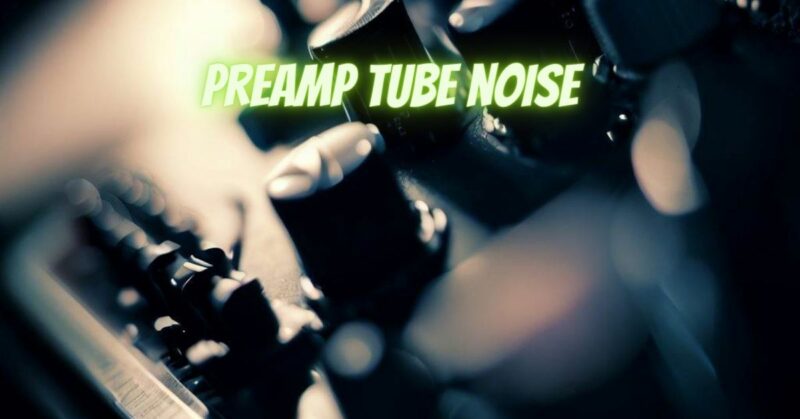Preamp tubes are essential components of a tube amp, responsible for amplifying the incoming signal and shaping its tone. However, preamp tube noise can be a frustrating issue that affects the sound quality and overall performance of your amp. In this article, we will explore common causes of preamp tube noise and provide practical tips for troubleshooting and resolving this problem, allowing you to enjoy clean and noise-free audio from your tube amp.
- Tube Microphonics:
One of the primary culprits of preamp tube noise is tube microphonics. This occurs when the tube becomes sensitive to vibrations and mechanical shocks, resulting in audible noises such as ringing, rattling, or squealing. To determine if tube microphonics is the cause, gently tap or lightly press on each preamp tube while the amp is on. If you hear loud or unusual noises, it’s likely that the affected tube is microphonic and needs to be replaced.
- Dirty Tube Pins or Sockets:
Dirty or oxidized tube pins and sockets can cause poor electrical connections, leading to noise issues. Remove each preamp tube carefully, clean the pins with a contact cleaner or isopropyl alcohol, and also clean the corresponding tube sockets. Ensure that the pins are securely inserted into the sockets when reinserting the tubes. This cleaning process can help eliminate noise caused by poor contact.
- Tube Interactions:
Mixing different brands or types of preamp tubes in your amp can result in noise due to inconsistent characteristics and interactions between tubes. Consider using a matched set of high-quality preamp tubes from the same brand or consult with an amp technician for recommendations on compatible tube combinations that can minimize noise and improve overall performance.
- Shielding and Grounding:
Insufficient shielding or improper grounding can contribute to preamp tube noise. Ensure that all cables and wires are properly shielded and grounded, and check the amp’s chassis grounding to minimize potential noise induction. You can also experiment with repositioning cables or using high-quality shielded cables to reduce noise interference.
- Heat and Tube Placement:
Excessive heat can exacerbate preamp tube noise. Ensure that your amp has adequate ventilation and that the tubes are not positioned too close to heat-generating components. Consider using a fan or an external cooling system to maintain optimal operating temperatures for the tubes.
Conclusion:
Preamp tube noise can be a frustrating issue, but with careful troubleshooting and attention to potential causes, you can often resolve the problem and restore clean audio performance to your tube amp. By addressing issues such as tube microphonics, dirty pins or sockets, tube interactions, shielding and grounding, and heat management, you can effectively eliminate or minimize preamp tube noise. If you’re uncertain or uncomfortable with tube amp maintenance, it’s always advisable to consult a qualified technician who can diagnose and resolve the specific issues causing noise in your amp. By keeping your preamp tubes in optimal condition, you can enjoy noise-free operation and the rich, warm tones that tube amps are known for.

